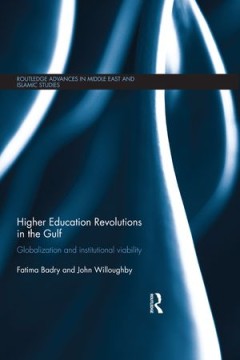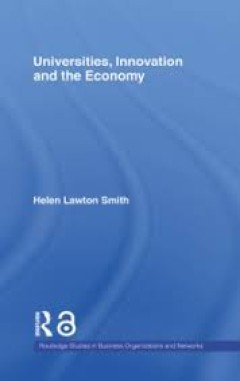Filter by

Unzuverlässiges Erzählen in Literatur und Medien
Unzuverlässiges Erzählen ist ein faszinierendes Phänomen. Wenn unsicher ist, ob dem Geschilderten getraut werden kann, eröffnen sich Möglichkeiten der Interpretation. Das gilt nicht nur für klassische Belletristik, sondern bereits für Kinderliteratur und Bilderbücher, darüber hinaus auch für unterschiedliche Medien wie Hörspiele, Filme und sogar Computerspiele. Immer wieder trete…
- Edition
- 1
- ISBN/ISSN
- 978-3-7329-8920-1
- Collation
- 524
- Series Title
- Literatur – Medien – Didaktik
- Call Number
- -

Begegnungen von Jung und Alt in der Kinder- und Jugendliteratur
Alter ist ein zentrales Merkmal literarischer Figuren. Es bedingt ihren Aktionsraum, ihr Verhaltensrepertoire, ihre sozialen Beziehungen zu anderen und vieles mehr. Besonders bedeutsam ist die Kategorie Alter für die Kinder- und Jugendliteratur: Über Alterskonstruktionen sind hier Fragen von Abhängigkeiten, Wissen, Erfahrungen, Erinnerungen und Entwicklung verhandelbar. Dabei treten Erwachse…
- Edition
- 1
- ISBN/ISSN
- 978-3-7329-9023-8
- Collation
- 272
- Series Title
- Literatur – Medien – Didaktik
- Call Number
- -

Berufliche Passagen im Lebenslauf
Bridging the gap between higher education research and policy making was always a challenge, but the recent calls for more evidence-based policies have opened a window of unprecedented opportunity for researchers to bring more contributions to shaping the future of the European Higher Education Area (EHEA). Encouraged by the success of the 2011 first edition, Romania and Armenia have organised …
- Edition
- 1
- ISBN/ISSN
- 978-3-319-20877-0
- Collation
- -
- Series Title
- XLIV, 898
- Call Number
- -

Putting PIRLS to Use in Classrooms Across the Globe
This open access book provides teachers with approaches to strengthen reading comprehension instruction based on scientific research and evidence-based didactic principles. In this volume, the Progress in International Reading Study (PIRLS) framework is used to inform teachers about the skills and knowledge that students need to comprehend certain texts. The book gives practical guidance on how…
- Edition
- 1
- ISBN/ISSN
- 978-3-030-95266-2
- Collation
- -
- Series Title
- IEA Research for Educators
- Call Number
- XV, 110

Building Communities of Trust Creative Work for Social Change
Drawing upon a combination of ethnographic research and media and communication theory, Building Communities of Trust: Creative Work for Social Change offers pathways to building trust in a range of situations and communities. Ann Feldman presents rich examples from her own life and social-impact journey with nonprofit, Artistic Circles, along with supplemental case studies from interviews w…
- Edition
- -
- ISBN/ISSN
- 9781003296423
- Collation
- -
- Series Title
- -
- Call Number
- -

Higher Education Revolutions in the Gulf : Globalization and Institutional Vi…
Over the past quarter century, the people of the Arabian Peninsula have witnessed a revolutionary transformation in higher education. In 1990, there were fewer than ten public universities that offered their Arabic-language curricula in sex-segregated settings to national citizens only. In 2015, there are more than one hundred public, semi-public, and private colleges and universities. Most of …
- Edition
- 1st Edition
- ISBN/ISSN
- 9781134450121
- Collation
- -
- Series Title
- -
- Call Number
- 378 BAD h

Universities, Innovation and the Economy
ABSTRACT Universities are increasingly expected to be at the heart of networked structures contributing to society in meaningful and measurable ways through research, the teaching and development of experts, and knowledge innovation. While there is nothing new in universities’ links with industry, what is recent is their role as territorial actors. It is government policy in many countries t…
- Edition
- 1st Edition
- ISBN/ISSN
- 9780203358054
- Collation
- -
- Series Title
- -
- Call Number
- -

Codeswitching in the classroom: critical perspectives on teaching, learning, …
Cover; Half Title; Series Page; Title Page; Copyright Page; Table of Contents; List of Illustrations; Contributors; Series Editors' Introduction; Preface; PART I: Theory and Context; 1. Sociolinguistic and Linguistic Foundations of Codeswitching Research; Codeswitching as Language Use; Codeswitching as Language Structure; Codeswitching, Mental Grammars, and Linguistic Repertoires; Codeswitching…
- Edition
- -
- ISBN/ISSN
- 9781315401102
- Collation
- -
- Series Title
- -
- Call Number
- -

Discursive thinking through of education: learning from those who transform t…
- Edition
- -
- ISBN/ISSN
- 9781003450726
- Collation
- -
- Series Title
- -
- Call Number
- -
- Edition
- -
- ISBN/ISSN
- 9781003450726
- Collation
- -
- Series Title
- -
- Call Number
- -

Higher education ICT integration in Africa: readiness, implementation and tra…
- Edition
- -
- ISBN/ISSN
- 9781003394877
- Collation
- -
- Series Title
- -
- Call Number
- -
- Edition
- -
- ISBN/ISSN
- 9781003394877
- Collation
- -
- Series Title
- -
- Call Number
- -
 Computer Science, Information & General Works
Computer Science, Information & General Works  Philosophy & Psychology
Philosophy & Psychology  Religion
Religion  Social Sciences
Social Sciences  Language
Language  Pure Science
Pure Science  Applied Sciences
Applied Sciences  Art & Recreation
Art & Recreation  Literature
Literature  History & Geography
History & Geography